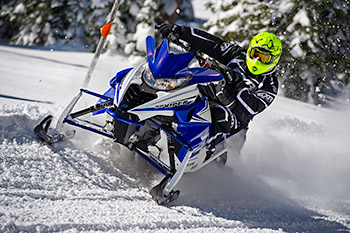So what do we think is going to happen to pure Yamaha sleds like the Apex, Vector, Venture GT and Phazer now that the company is having so much success with its Arctic Cat manufacturing agreement?
Here’s a few thoughts:
1. We think the Apex still has some retail life in it and Yamaha will likely build it for another year. It’s really the only sled of its kind in the industry and it still sells well and has plenty of showroom sizzle.
2. We think the Vector may be on the bubble. Although we love this sled, it simply is tough to compete against the Viper’s lighter weight and identical 130-hp power package.
3. The Venture GT will definitely live for a few more years. Its combination of comfort, amenities and ideal power are still enough to keep Yamaha consumers interested.
4. The Phazer will likely hang around for another year but this is a model segment both Arctic Cat and Yamaha want to deliver more on.
Arctic Cat wants a good medium power 4-stroke to grab sales from Ski-Doo’s ACE line-up and Yamaha is well aware the glow is off the Phazer as an entry level sled.
The challenge looks like this: The Phazer’s high-revving 500 twin is an expensive engine to build to make power in the 80-hp range. It’s tough to make use of this engine in another chassis if its cost makes it uncompetitive with other 4-strokes.
Basically, the problem has to do with engine displacement. This engine needs to bigger. We think a less complex, less costly 700 to 900cc 4-stroke twin will deliver sufficient torque and horsepower in the range trail and utility riders want.
Two of the biggest problems with all this is the high cost of tooling a new 4-stroke from the ground up and the time it takes to get there. If Yamaha started today, it probably wouldn’t have anything to offer until 2017.
Barring the guess Yamaha has already got an engine like this waiting in the wings (it wouldn’t surprise us given the company’s expertise at building engines) we don’t see this dream being fulfilled real soon.



